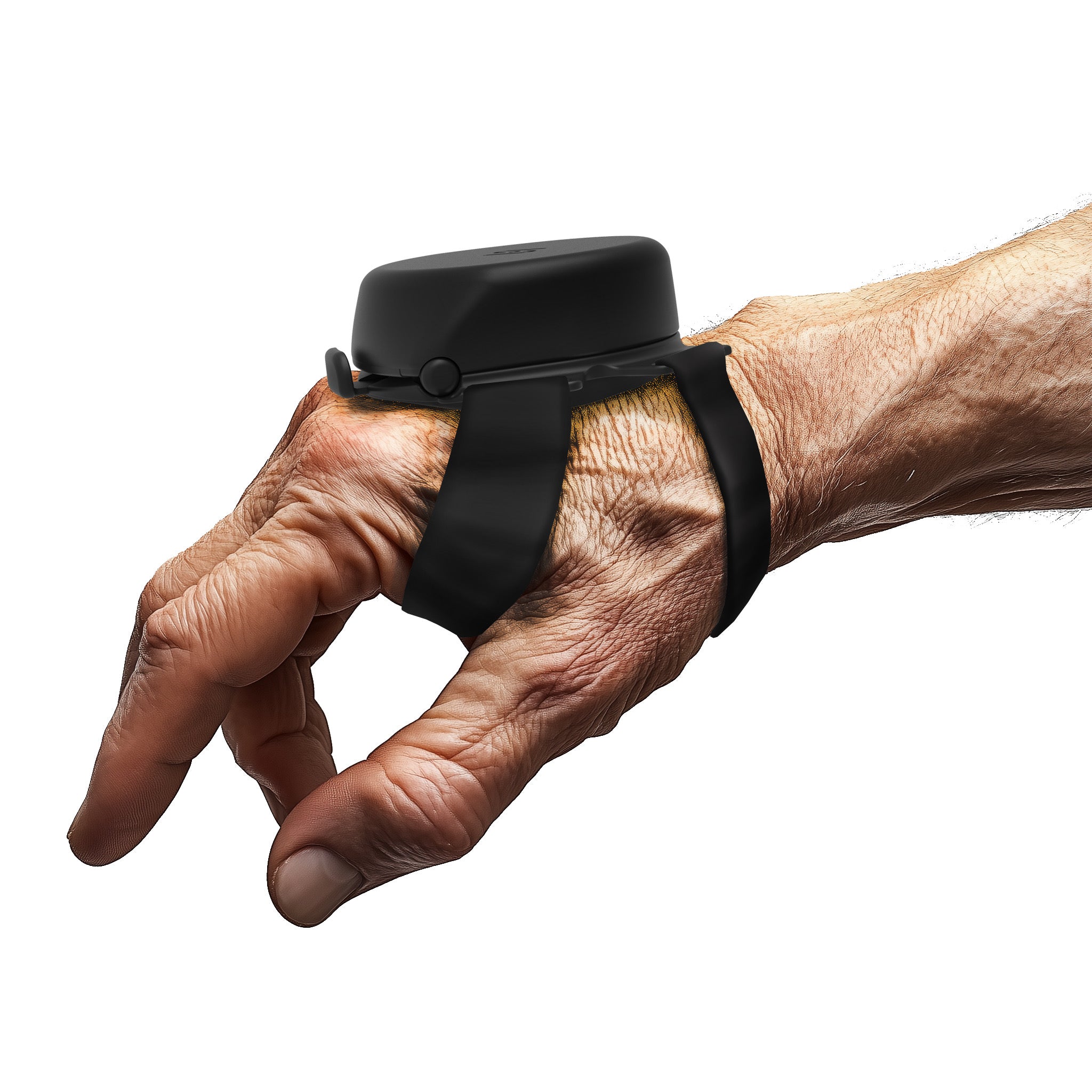Hand tremors can be a disruptive and challenging condition, affecting a person's ability to perform everyday tasks. While medication and assistive devices play a significant role in managing tremors, exercise is a powerful tool that can help improve muscle control and reduce symptoms. This blog explores innovative exercises designed to stabilize hand tremors, offering new hope and strategies for those seeking to regain control over their movements.
The Power of Essential Tremor Treatment Exercise
Unlocking the Potential of Targeted Movement Exercises specifically tailored for essential tremor treatment can significantly enhance stability and dexterity. These exercises focus on strengthening the muscles in the hands and arms, improving coordination, and increasing grip strength. By incorporating a regular routine of targeted movements, individuals with tremors can see a reduction in the severity of their symptoms, leading to improved quality of life.
Weighted Gloves: A Dynamic Approach to Tremor Stabilization
Enhancing Exercise Efficacy with Added Resistance Weighted gloves for tremors are an innovative tool that adds resistance to hand movements, thereby increasing muscle engagement and strength. When used during exercise, these gloves can amplify the benefits of routine workouts, helping to stabilize the hands and reduce the involuntary movements associated with tremors.
Wrist Weights: Building Strength Where It Counts
Optimizing Muscle Tone with Wrist Weights for Essential Tremor Wrist weights for essential tremor are designed to provide a constant, gentle resistance, encouraging the muscles in the forearm and wrist to work harder. This additional weight helps to build muscle tone and control, which is crucial for those with hand tremors. The best wrist weights for tremors are often adjustable, allowing users to gradually increase resistance as their strength improves.
Hand Weights: A Simple Yet Effective Tool
Incorporating Hand Weights for Tremors into Daily Routines Hand weights are a versatile and simple tool that can be used to perform a variety of exercises to help stabilize hand tremors. From wrist curls to arm raises, the incorporation of hand weights into an exercise regimen can lead to improved muscle strength and a potential reduction in tremor frequency and intensity.
Customized Exercise Regimens for Tremor Management
Creating a personalized exercise regimen is essential for managing hand tremors with precision and care. This tailored approach considers the unique tremor patterns, strength levels, and daily activity requirements of each individual. By outlining a workout plan that includes specific tremor treatment exercises, we emphasize the importance of consistency and gradual progression. This ensures a safe and effective journey towards tremor stabilization, empowering individuals to maintain control and enhance their quality of life.
The Role of Weighted Accessories in Tremor Reduction
Weighted accessories, such as gloves and wrist weights, are not just tools for strength; they are instrumental in reducing tremors. The added weight provides essential feedback to the nervous system, enhancing motor control and stability. This section explores the scientific principles behind this approach and offers practical advice on selecting the best weighted accessories tailored for tremor management. It also guides on integrating weighted gloves into daily routines, ensuring safety and maximizing the benefits of this technique.
The development of assistive devices for hand tremors is particularly crucial in the context of conditions like Parkinson's disease, where tremors significantly impact daily life. Innovations such as wearable devices and utensils designed for tremor management cater to the specific needs of individuals with Parkinson's, offering targeted solutions to enhance their quality of life. These advancements not only signify the progress in technology, but also highlight the dedication to addressing the unique challenges posed by Parkinson 's-related tremors. As we explore the journey of these devices, it becomes evident that their evolution is intricately tied to understanding and meeting the diverse needs of those with Parkinson's and similar conditions.
Strength Training Techniques for Enhanced Motor Control
Strength training is a cornerstone of enhancing neuromuscular connections, crucial for combating tremors. This section introduces targeted strength training techniques, focusing on the use of hand weights to fortify the muscles of the forearms, wrists, and fingers. Emphasizing proper form and balanced muscle development, we provide insights into building a solid foundation of strength that supports tremor management, while also highlighting the importance of avoiding overexertion to prevent injury.
Integrating Flexibility and Coordination Exercises
A comprehensive tremor management strategy extends beyond strength to include flexibility and coordination. This section presents a series of exercises aimed at improving range of motion and enhancing coordination, which are key in reducing tremor severity. Including stretches and coordination drills that work in tandem with wrist weights, we offer a holistic exercise therapy approach. This not only addresses the physical aspects of tremor management but also contributes to overall functional mobility and control.
FAQ
1. How often should I perform essential tremor treatment exercises to see improvement in my hand tremors?
Consistency is key when it comes to essential tremor treatment exercises. It's generally recommended to perform these exercises daily. Starting with a few minutes each day and gradually increasing the duration as your strength and endurance improve can lead to noticeable benefits over time.
2. Can weighted gloves for tremors be used during regular daily activities, or should they only be worn during exercise?
Weighted gloves for tremors are versatile and can be worn during regular daily activities as well as during exercise. They can provide resistance and support during routine tasks, potentially improving hand stability. However, it's important to consult with a healthcare professional to ensure they're appropriate for your specific condition and to avoid overuse.
3. Are wrist weights for essential tremor safe for everyone to use?
While wrist weights can be beneficial, they may not be suitable for everyone. Individuals with certain health conditions or those who have not exercised in a while should consult with a healthcare professional before starting any new exercise regimen, including one that involves wrist weights.
4. What are the best wrist weights for tremors, and how do I choose the right ones for me?
The best wrist weights for tremors are those that fit comfortably, have adjustable resistance, and do not restrict your range of motion. It's important to choose weights that are appropriate for your current level of strength and to increase the weight gradually to prevent strain or injury.
5. Besides using hand weights for tremors, what other types of exercises are effective for managing hand tremors?
In addition to using hand weights, exercises that focus on enhancing fine motor skills, coordination, and flexibility can also be effective. This includes activities like tai chi, yoga, and targeted hand exercises such as squeezing a stress ball or practicing finger lifts. These exercises can help improve the overall function of the hands and reduce tremor symptoms.
Advanced Neuromuscular Techniques for Tremor Control
Advanced neuromuscular techniques that incorporate the principles of neuroplasticity present a groundbreaking approach to tremor control. By engaging in exercises that promote the brain's ability to form new neural connections, individuals can enhance the communication between their brain and muscles, leading to potential reductions in tremor severity. Techniques such as constraint-induced movement therapy, which involves restricting the use of the less affected limb to encourage use of the tremor-dominant limb, can significantly improve function. Similarly, proprioceptive training, which focuses on the sense of self-movement and body position, can also be instrumental in managing tremors. These exercises are not only innovative but also represent a leap forward in personalized tremor therapy.
The Impact of Aerobic Exercise on Tremor Reduction
Aerobic exercise is a vital component of a holistic tremor management plan. Engaging in regular cardiovascular activities like brisk walking, swimming, or cycling can improve blood circulation, reduce stress levels, and contribute to a decrease in tremor episodes. For those living with tremors, aerobic exercise should be approached with care, starting slowly and increasing intensity in a controlled manner. This ensures safety while also taking advantage of the tremor-reducing benefits of increased heart rate and improved blood flow. As a complementary approach to targeted tremor exercises, aerobic activity can help enhance overall well-being and tremor control.
Dietary Considerations for Optimal Muscle Function
Nutrition plays a pivotal role in supporting muscle function and overall health, particularly when managing conditions like hand tremors. A diet rich in essential nutrients such as magnesium, which aids in muscle relaxation, potassium for muscle and nerve function, and B vitamins for nerve health, is crucial. Foods like leafy greens, nuts, bananas, and whole grains are excellent sources of these nutrients. Hydration is equally important, as water is essential for optimal muscle function. Conversely, it's advisable to limit intake of substances that can exacerbate tremors, such as caffeine. By aligning dietary habits with exercise routines, individuals can create a powerful synergy that supports muscle strength, nerve health, and tremor reduction.
Conclusion
For those living with hand tremors, innovative exercises offer a promising path to improved hand stability and function. By incorporating essential tremor treatment exercises, utilizing weighted gloves, and employing wrist and hand weights, individuals can actively work towards reducing their symptoms. These exercises, when performed consistently and under the guidance of a healthcare professional, can be a valuable component of a comprehensive tremor management plan.



